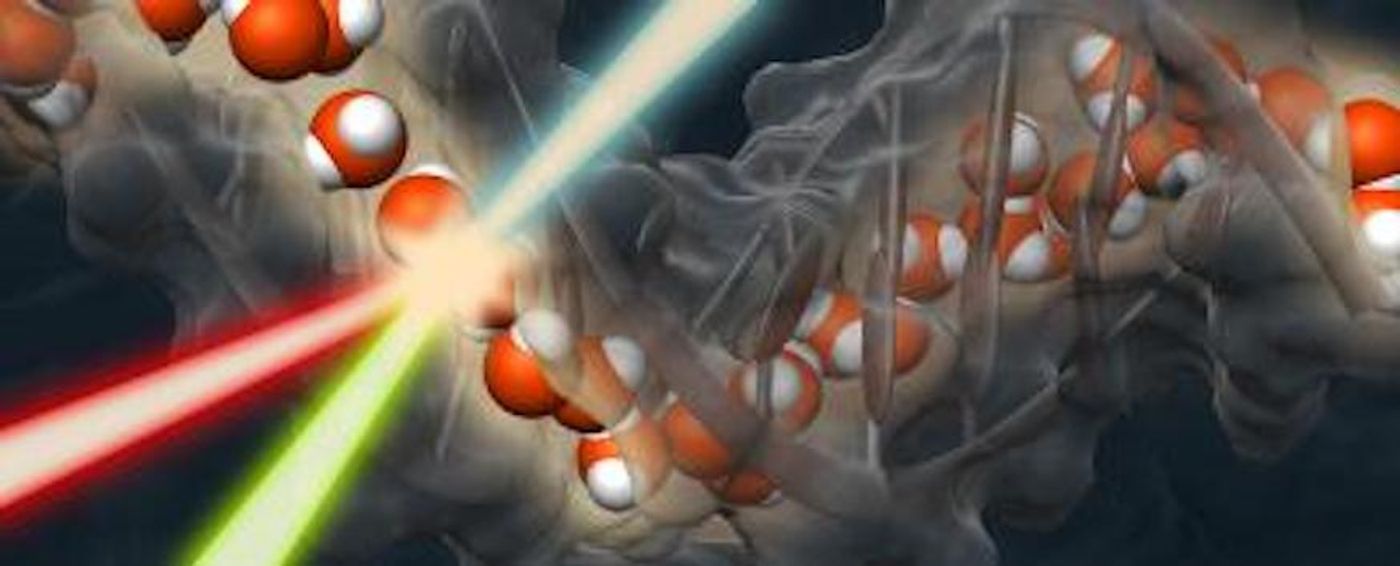Water Keeps DNA Molecules Hydrated
Water, an abundant resource critical to life is a very special molecule that still hides some secrets. Beyond being essential to biological systems, it has unique chemical properties and has special abilities to dissolve stuff. Researchers want to understand more about the unique characteristics of water, and have now learned more about how it relates to one of the most important biological molecules - DNA. Central Science, a journal of the American Chemical Society has published the findings on water molecules interacting with DNA.
"[Water is] uniquely adapted to biology, and vice versa," Poul Petersen, an Assistant Professor of Chemistry and Chemical Biology at Cornell University. "It's super-flexible. It dissipates energy and mediates interactions, and that's becoming more recognized in biological systems."
Petersen's team utilized a special kind of spectroscopy to see a previously unknown property of water. They found that it was following the helical structure of DNA, which is chiral. That made it the first time a chiral water superstructure was observed enveloping a biomolecule. Chirality is an important part of biology; if a molecule is chiral it cannot be superimposed on a mirror image of itself, and most biological molecules are chiral.
"If you want to understand reactivity and biology, then it's not just water on its own," Petersen explained. "You want to understand water around stuff, and how it interacts with the stuff. And particularly with biology, you want to understand how it behaves around biological material -- like protein and DNA."
Admittedly, the immediate applications of this work are not clear, but water plays such a large part of biological systems it seems like a worthy pursuit. Water does act to support the structure and function of DNA, and studies have previously described a wide variety of behaviors by the water structure residing in the minor groove of DNA strand.
This work took advantage of techniques Petersen also used in a 2015 publication in the Journal of Physical Chemistry, chiral sum frequency generation spectroscopy (SFG). Very simply, two photon beams interact with a specimen to create an SFG beam that is the sum of the energies of the other two.
For this work, the beams and calculations were fine-tuned to show that a chiral water superstructure was surrounding the DNA specimen. This work also presents a new method for studying water.
"The techniques we have developed provide a new avenue to study DNA hydration, as well as other supramolecular chiral structures," Petersen said. "Certainly, chemical engineers who are designing biomimetic systems and looking at biology and trying to find applications such as water filtration would care about this," he said. Petersen noted that another application might be the improvement of anti-biofouling materials that resist the accumulation of microbes on moist surfaces.
If you want to know more about chirality in biology, check out the TED-Ed.
Sources: AAAS/Eurekalert! via Cornell University, Central Science









